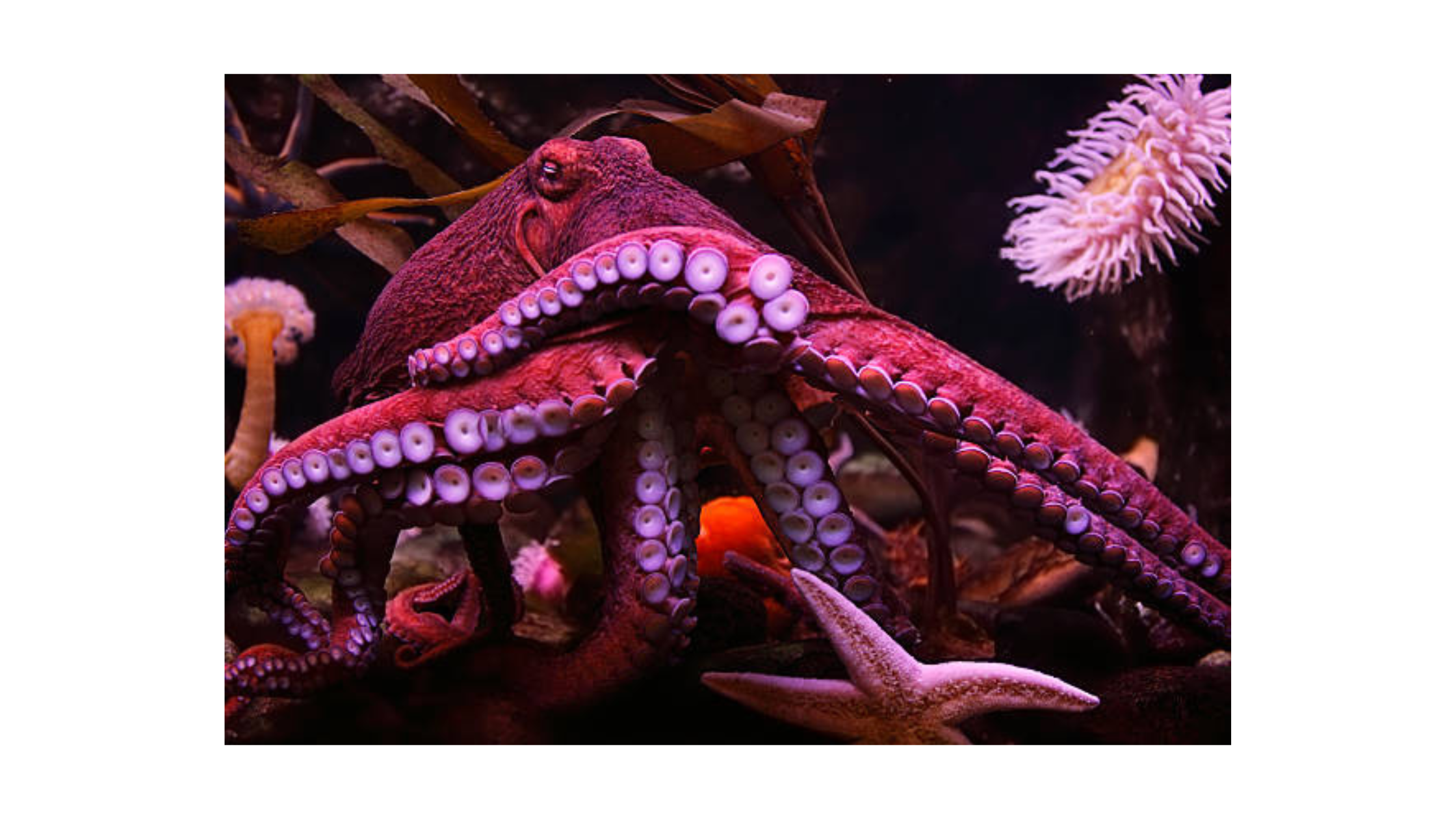RAPID CITY, S.D. (May 22, 2023) – Leveraging technology from global 3D printing solutions provider B9Creations, researchers are developing 3D printed adhesive skin that offers intelligent and reversible adhesion in underwater environments, with capabilities mimicking the advanced manipulation, sensing, and control of octopuses.
This groundbreaking display of biomimicry has the ability to tackle complex human challenges and has immense potential in several realms – from underwater engineering to advanced medical applications.
- Underwater Adhesives: The development of octopus-inspired skin could lead to the creation of adhesives that work effectively underwater, enabling us to bond materials and equipment in aquatic environments.
- Medical Applications: The properties of the octopus-inspired skin, such as its ability to conform to rough surfaces, could be utilized to develop medical adhesives that can stick to organs and tissue.
- Underwater Construction: The use of octopus-inspired skin could be explored in underwater construction projects, such as the installation of pipelines and offshore wind turbines, where traditional adhesives often fail due to the harsh aquatic environment.
- Marine Exploration: Octopus-inspired skin could be used to improve the grip of underwater robots, allowing them to maneuver in challenging underwater environments, explore deep-sea habitats, and collect samples for research purposes.
- Diving and Swimming Equipment: This development could lead to the creation of improved wetsuits, gloves, and swimming caps that can provide better grip and reduce drag, enabling swimmers and divers to move more efficiently through the water. It could also be used by swimmers in high-performance environments, such as the Olympics.
- National Defense: Octopus-inspired adhesive skin could be used to create underwater robots or equipment that can adhere to the sides of ships or submarines, enabling the equipment to conduct covert operations without being detected. It could also be used to create anti-tamper devices for sensitive equipment and infrastructure, making it more difficult for unauthorized individuals to access or tamper with critical systems.
Adhesives on wet surfaces are significantly less effective than in dry environments, making achieving a firm and reversible attachment challenging. And yet, many organisms, like octopuses and other cephalopods, have evolved the ability to establish strong attachments in underwater environments with an impressive level of sophistication in terms of sensing and control mechanisms. For cephalopods, their sensing system involves photoreceptive vision through their eyes, mechanoreceptors that detect fluid flow, pressure, and contact, as well as chemoreceptive tactile sensors. This allows them to obtain information on attachment and object proximity, enabling them to perform active gripping and releasing.
The unique characteristics and mechanisms of cephalopods have served as inspiration for various projects, such as soft robotic grippers resembling tentacles, microstructured surfaces that can either be passive or active, and systems controlled by dielectric elastomer actuators and pneumatic pumps. However, current synthetic adhesive-based manipulators are typically operated manually and lack sensing and control capabilities. The absence of a sophisticated sensing system for proximity detection and mechanoreceptors to detect contact with surfaces hinders active control of adhesive elements. While optical and sound-based sensors can be used to detect proximity in synthetic systems, the size of these sensors often restricts integration with synthetic adhesives, resulting in limited manipulation or autonomous grasping capabilities in uncontrolled environments.
Researchers are now taking a new approach – introducing an underwater adhesive system that includes switchable adhesive components as well as a sensory system, processing, and control mechanisms for autonomous activation and release. This tightly integrated system is capable of intelligently controlling multiple adhesive elements, allowing for dexterous manipulation in both dry and wet environments. This combination of adhesion tunability, sensing, and control is unparalleled in synthetic adhesives.
The close integration of sensors, processing, and control with quickly switchable adhesives presents new possibilities for dexterous manipulation of underwater objects using compact systems without prior knowledge of the environment. This functionality is demonstrated in a wearable adhesive glove that enables abilities mimicking the advanced manipulation, sensing, and control of octopuses and other cephalopods. Each finger of the glove includes a sensor and an active adhesive element, created by pouring elastomer into molds 3D printed using B9Creations technology, and a micro-LIDAR optical sensor for proximity detection. This real-time object detection coupled with rapidly switchable adhesives enables the manipulation of objects at time scales relevant to human movement.
Download the B9Creations press kit.
###
MEDIA CONTACT
Rachael Ballard
Marketing & Communications Coordinator
+1 (605) 716-3200
rachael.ballard@b9c.com
About B9Creations
As a global provider of professional additive manufacturing solutions, B9Creations has become the industry leader in production, speed, and value across its 3D printing hardware, software, materials, and services. It now stands as the additive manufacturing market leader in high-precision applications such as medical, aerospace, luxury goods manufacturing, and research. B9Creations serves customers and certified dealers in nearly 70 countries around the globe. Find us online at b9c.com, on Facebook, Twitter, Instagram, YouTube, and LinkedIn.


